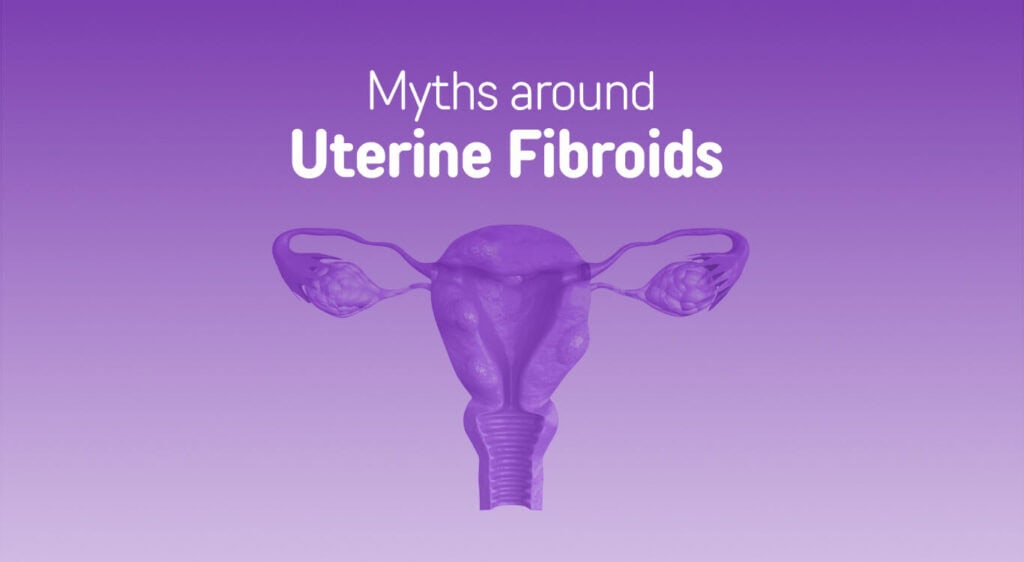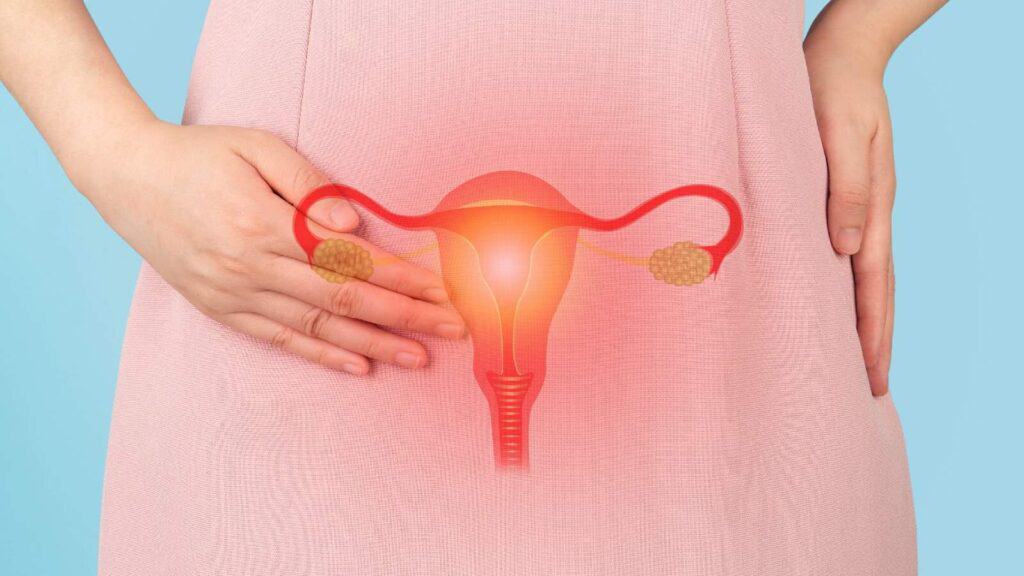Uterine Fibroids in Singapore and Understanding Symptoms, Risk Factors, and Treatment
Women’s health includes the care and well-being of the reproductive system, which often causes significant physical, emotional, and psychological effects on their daily lifestyle. As an example, those with uterine fibroids experience cramps, bleeding, constipation, and other symptoms. For some women, these symptoms are like that of dysmenorrhea or pain associated with menstruation. As a result, women may confuse uterine fibroid symptoms with other conditions. It is also important to note that some cases of women with uterine fibroids experience no symptoms at all. This highlights the importance of seeking medical attention and regular check-ups for diagnosis and screening for women’s health conditions.

(image source: https://www.mayoclinic.org/diseases-conditions/uterine-fibroids/symptoms-causes/syc-20354288)
A uterine fibroid is a growth that develops in the uterus. It may come in a single nodule or multiple nodules. The location of these growths varies from person to person. It can grow in the uterus wall or the outer surface of the uterus. Uterine fibroids are non-cancerous (benign) growths which affects women worldwide. It is estimated that up to 50% of women may have uterine fibroids by the age of 35. It has been observed that women develop fibroids in their reproductive years, where women experience a lot of hormonal changes as they age. Uterine fibroids are uncommon in women who are experiencing menopause. This is linked to the decreased production of estrogen and progesterone during the menopause stage. Even so, women should not have to wait and see if their condition worsens over time.
The symptoms of uterine fibroids include:
- Irregular menstrual cycle with heavy bleeding
- A menstrual cycle that lasts longer than usual (more than 7 days)
- Spotting (bleeding that is not caused by menstrual period)
- Frequent urination
- Constipation
- Fatigue and lethargy due to blood loss from heavy periods
In some uncommon instances, uterine fibroids can lead to severe issues like trouble with breathing, fertility problems, or anemia because of the substantial blood loss. Unfortunately, there are no available treatments to stop fibroids from developing, but once they do appear, the choice of treatment depends on factors like the size and position of the growths. If you think that you have uterine fibroids, it is best to consult a specialist for proper evaluation.
It is important to keep track of your reproductive health especially if you have family members who had fibroids. Some factors that might make you more likely to develop this condition would include your age, being overweight, your family history, and your hormones.
In Singapore, vascular surgeons may recommend a treatment called uterine fibroid embolisation (UFE) that can help many women with fibroid symptoms. It works by cutting off the blood supply to the uterus, which makes the fibroids shrink in a few weeks to months. Sometimes, surgery might be needed, depending on the size and where the fibroids are located. It’s a good idea to talk to a specialist to figure out the best treatment for you. You will undergo tests and medical interviews so your vascular surgeon can decide if you are a suitable candidate for uterine fibroid embolisation.

(image source: https://bankerivf.com/blog/uterine-fibroids-myths-facts/)
Debunking Myths About Uterine Fibroids in Singapore
- MYTH: Fibroids can be fully prevented.
FACT: There is no sure-fire way to prevent the development of fibroids. It is important to take note of the risk factors associated with this condition. These risk factors include age, obesity, genetics, and hormone levels.
- MYTH: All women with fibroids experience symptoms.
FACT: Not all uterine fibroids make you experience symptoms such as painful menstruation or heavy bleeding. There are cases where uterine fibroids go undetected because of the lack of symptoms.
- MYTH: Women with fibroids will be infertile.
FACT: Uterine fibroids can affect fertility, but there are methods such as uterine fibroid embolisation to treat this condition.
- MYTH: Fibroids always require open surgery.
FACT: For suitable candidates, there is the option for uterine fibroid embolisation as a treatment for this condition. It will shrink the growths and reduce the blood flow to the fibroids.
- MYTH: Only older women develop uterine fibroids.
FACT: Women can develop uterine fibroids at any age, but it is most common in women in their 30s or 40s.

(image source: https://www.healthshots.com/preventive-care/reproductive-care/5-ways-to-manage-abdominal-pain-due-to-fibroids/)
Protecting Yourself from Uterine Fibroids in Singapore: Treatments and Alternatives
The goal of uterine fibroid embolisation is to place tiny particles into blood vessels that supply the fibroids. This blocks their blood flow and make them shrink. Another option is myomectomy, a surgery that removes fibroids from inside the uterus, but it’s more invasive and takes longer to recover from than UAE. Doctors might also give you hormonal medicines to control symptoms like heavy bleeding, but these can have side effects like weakening your bones and fertility issues. If you stop taking these medicines, the fibroids can come back quickly. It is best to speak with a specialist to better understand the various options and choose the one which is most appropriate for your situation.
In Singapore, there are different ways to treat uterine fibroids. Uterine fibroid embolisation is one option, and it’s often cheaper than surgery (myomectomy) because it doesn’t require deep incisions and it can be done as a day procedure. However, there are also medications like GnRH agonists that can shrink fibroids by reducing hormones (but this treatment might lead to bone loss and infertility). Myomectomy is a surgery that relieves symptoms but is more invasive than UFE. The cost of treatment depends on factors like the type of procedure, the number and size of fibroids, and any other health issues you have, so it’s best to talk to a specialist for advice on the right treatment, insurance coverage, and the estimated cost.

(image source: https://www.invitra.com/en/uterine-fibroids/symptoms-of-myomas/)
It’s important to consult your doctor if you notice any signs of uterine fibroids like heavy periods, strong cramps, bleeding between periods, or problems with urination and bowel movements. The good news is that if you undergo uterine fibroid embolisation, you can usually fully recover in about 3 to 4 weeks. Right after the treatment, you should rest and avoid strenuous physical activities like heavy exercise and lifting. Most women who get this treatment experience less heavy bleeding and pain during periods.
Preparation and Expectations for Patients with Uterine Fibroids
The success rate and recovery rate for uterine fibroid embolisation in treating uterine fibroids varies from person to person. It depends on things like the size and location of the fibroids and the blood vessels supplying them. Patients will experience fewer symptoms, which lets them perform their daily activities with ease. But it’s important to know that not everyone responds the same way. Some may see all their symptoms go, while others might still have minor issues like discomfort during their periods or heavy bleeding after the treatment.
Diagnosing fibroids involves a few steps to get a clear picture of what’s going on in your body. First, vascular surgeons often use an ultrasound scan to see the size, location, and number of fibroids. If there’s a need for more detailed information, you may undergo a CT or MRI scan. These tests help vascular surgeons identify your condition so they can plan the right treatment for you. Before you undergo treatment for uterine fibroids in Singapore, your vascular surgeon will ask you about your health, including any medical conditions you have (like diabetes) and any medicines you take, even if they’re not prescription medicine.

(image source: https://www.mayoclinic.org/diseases-conditions/uterine-fibroids/diagnosis-treatment/drc-20354294)
The process of uterine fibroid embolisation involves a tiny tube (catheter) that will be inserted through a small cut in your arm or groin to send embolic agents into the blood vessels that feed your uterine fibroids. This blocks the blood supply to the fibroids, and over time, they get smaller. The best part is, you usually don’t have to stay overnight in the facility; you can go home the same day and resume your usual activities after recovery. This treatment causes only minimal disruption on the surrounding tissues, so you recover faster compared to having traditional surgery to remove the fibroids (called myomectomy).
Finding the Right Uterine Fibroid Embolisation Provider in Singapore
The Vascular & Interventional Centre in Singapore offers uterine fibroid embolisation as a minimally invasive treatment for uterine fibroids. Our vascular surgeons are well-trained in screening, diagnosing, and treating this condition. To find out if the procedure is right for you, you may request a consultation so you can understand your options and choose the best treatment for you. You can contact us at +65 6694 6270 during clinic hours or you can send an e-mail to en*****@***********tr.com.
FAQs:
Uterine fibroid embolisation is a minimally invasive procedure designed to treat uterine fibroids without having to resort to open surgery. It works by cutting off the blood supply to the fibroids in the uterus, which shrink and die over time. The procedure involves a vascular surgeon threading tiny catheters (tiny tubes) through your groin area into the uterine artery, where they release embolic agents that block blood flow to the fibroids.
During UFE, a catheter is inserted through a small incision in the groin or wrist, and tiny particles are injected into the blood vessels supplying the fibroids, blocking blood flow and leading to their reduction in size.
UFE offers several benefits, including shorter recovery times compared to traditional surgery, reduced hospital stays, and effective symptom relief for women suffering from uterine fibroids.
Women who experience significant symptoms from uterine fibroids and prefer a non-surgical option may be suitable candidates for UFE. A consultation with a specialist is necessary to determine eligibility.
UFE can help alleviate symptoms such as heavy menstrual bleeding, pelvic pain, pressure symptoms, and discomfort caused by uterine fibroids.
UFE is generally considered safe, with a low risk of complications. However, as with any medical procedure, potential risks should be discussed with your healthcare provider.
Most women can expect to return to normal activities within 1 to 2 weeks after the procedure, although some may experience mild discomfort for a few days post-treatment.
UFE treatment is available at specialised vascular and interventional centers in Singapore. Consult with a healthcare provider for recommendations on where to receive care.
References:
- https://www.sgvascularctr.com/service/fibroid-problems
- https://www.mayoclinic.org/tests-procedures/myomectomy/about/pac-203847100
- https://www.sgvascularctr.com/do-i-have-uterine-fibroids/

Dr Chen Min Qi profile
Dr. Chen Min Qi is a fellowship-trained Vascular and Endovascular Surgeon who graduated from the National University of Singapore in 2005. He subsequently completed his basic and advanced training in General and Vascular Surgery while obtaining the Member of Royal College of Surgeons of Edinburgh (MRCSed) qualification in 2010, and the Master of Medicine (General Surgery) qualification in 2015. Dr Chen was subsequently successful at the fellowship exams obtaining the Fellow of Royal College of Surgeons of Edinburgh (FRCSed) qualification in 2016.
Upon completion of his advanced surgical training, Dr Chen Min Qi joined the newly opened Ng Teng Fong General Hospital (NTFGH) as a specialist in the Vascular Surgery division. In 2018, Dr Chen was awarded the Health Manpower Development Plan (HMDP) grant from MOH to undergo further subspeciality Vascular training at the internationally renowned St Mary’s Hospital in London, United Kingdom. There Dr Chen gained further experience in surgeries on complex abdominal and thoracoabdominal aortic aneurysms, redo open repair of abdominal aortic aneurysms following failed EVAR surgeries as well as carotid endarterectomy surgery and lower limb revascularization surgeries.
Upon his return in 2020, Dr Chen Min Qi joined the newly formed Woodlands Health as head of their Vascular service, before joining his current practice at the Vascular and Interventional Centre in January 2023.
